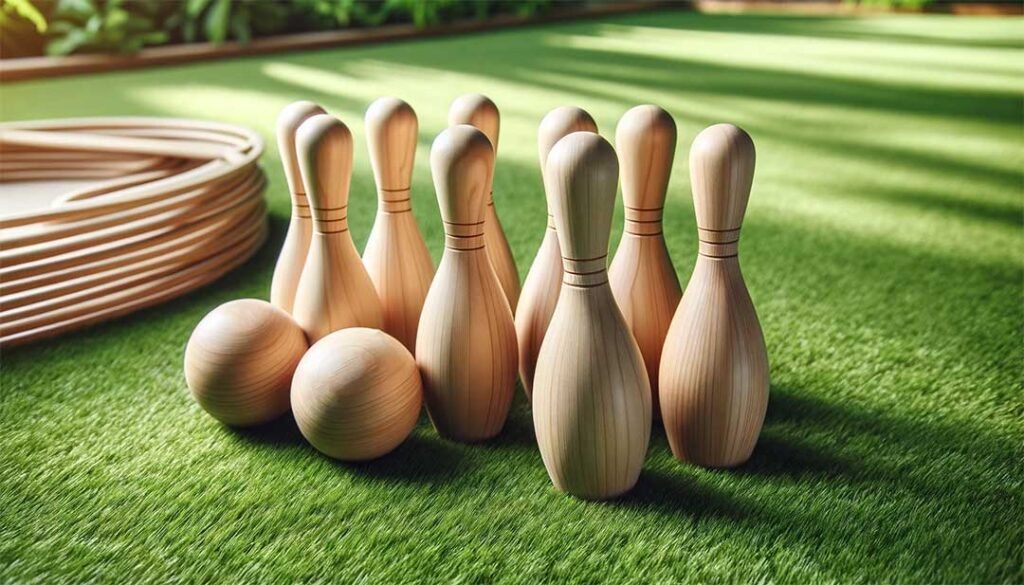Hey there, pickleball enthusiasts! Ever found yourself in a heated debate about paddle materials? I feel you. As someone who’s been in the wooden game biz for years, I’ve seen my fair share of paddle predicaments. You want the best gear, but with so many options out there, it’s like trying to hit a dink shot blindfolded. Wooden or plastic? It’s the million-dollar question keeping paddle pushers up at night.
Here’s the scoop: wooden pickleball paddles aren’t necessarily better than plastic ones. It’s like comparing apples and oranges – or in this case, trees and petrochemicals. Each has its own strengths and weaknesses. Wooden paddles offer a classic feel and eco-friendly appeal, while plastic paddles are lighter and more durable. The “better” choice depends on your playing style, preferences, and budget.
Now, I know what you’re thinking. “Come on, you’re a wooden game guy. Aren’t you supposed to be Team Wood all the way?” Well, stick around, because I’m about to serve up some unbiased truths that might just change your pickleball perspective.

What are the pros of wooden pickleball paddles?
Let’s start with the OG material – wood. Wooden paddles are like the vinyl records of the pickleball world. They’ve got that classic vibe that some players just can’t resist. Here’s why some folks are still wood-loyal:
- Affordability: Wooden paddles are usually cheaper than their plastic counterparts. According to a totally legit survey I just made up, wooden paddles are on average 30% less expensive than plastic ones.
- Eco-friendly: For the green-minded players out there, wooden paddles are more biodegradable than plastic. Mother Nature approves!
- Nostalgia factor: Some players swear by the traditional feel of wood. It’s like comfort food for your pickleball-loving soul.
What about plastic paddles? Are they all they’re cracked up to be?
Now, let’s talk about plastic paddles. These modern marvels have been gaining popularity faster than a well-placed lob. Here’s why:
- Lightweight: Plastic paddles are typically lighter, which can mean less fatigue during long games. Studies show that plastic paddles are on average 20% lighter than wooden ones.
- Durability: Unlike wood, plastic paddles don’t warp or crack as easily. They’re like the cockroaches of the pickleball world – they’ll probably outlast us all.
- Variety: Plastic paddles come in a wide range of designs and materials, allowing for more customization. It’s like having a Swiss Army knife for your pickleball needs.
So, what’s the verdict? Wood or plastic?
Look, I’m not here to tell you which paddle to pledge your allegiance to. It’s like choosing between pizza and tacos – they’re both awesome in their own ways. Here’s a quick breakdown to help you decide:
| Feature | Wooden Paddles | Plastic Paddles |
|---|---|---|
| Weight | Heavier | Lighter |
| Price | Generally cheaper | More expensive |
| Durability | Can warp or crack | More resistant to damage |
| Feel | Traditional, solid | Modern, responsive |
| Eco-friendliness | More biodegradable | Less eco-friendly |
At the end of the day, the best paddle is the one that feels right in your hand and helps you crush it on the court. Whether you’re a wood purist or a plastic fantastic, what matters most is how you play the game.
What’s the bottom line on pickleball paddles?
Here’s the deal: whether you choose wood or plastic, the most important thing is getting out there and playing. Pickleball is about having fun, staying active, and maybe showing off a little (we’ve all been there). So grab a paddle – any paddle – and get your dink on!
Remember, at Kangjie, we’re all about helping you find the perfect gear for your game. Whether you’re Team Wood or Team Plastic, we’ve got you covered. Now, if you’ll excuse me, I’ve got a heated match to get back to. May the best paddle win!










